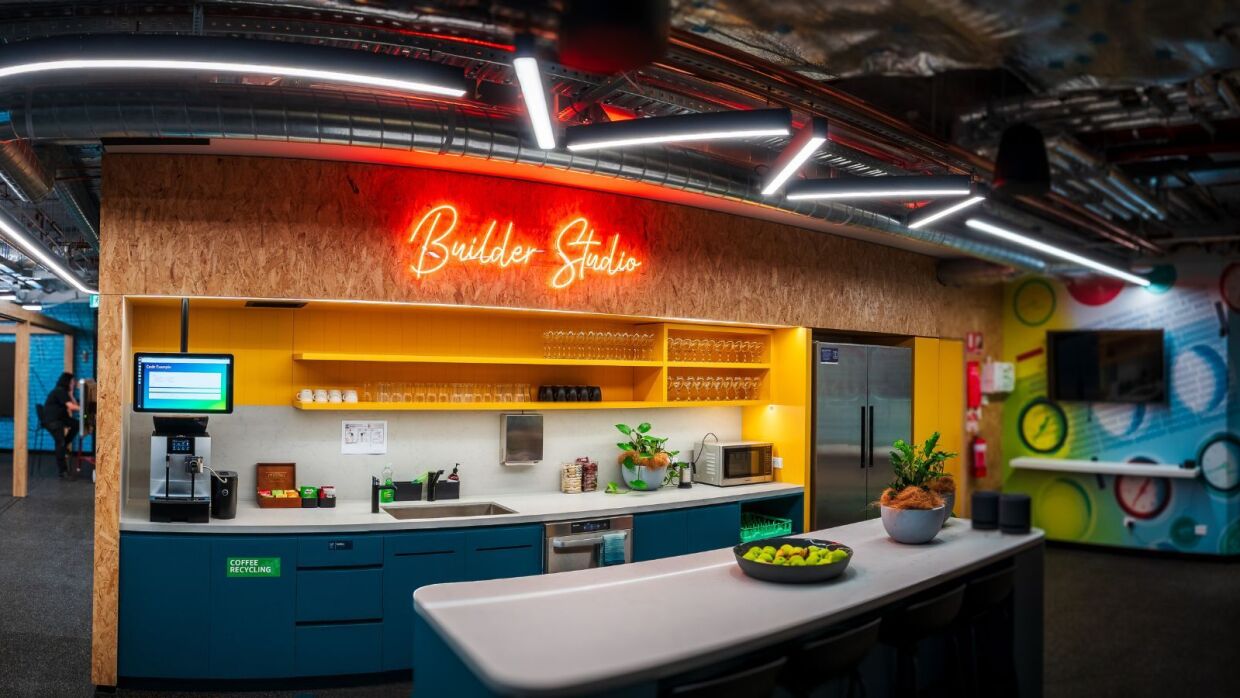Amazon Web Services (AWS) has opened its first AWS Builder Studio in Asia-Pacific, located in the heart of Melbourne’s CBD within Amazon's newest Australian office. Spanning 350 square metres, the AWS Builder Studio is the second facility of its kind globally.
The studio, which is in addition to AWS’s plan to invest $13.2 billion in Australia from 2023 to 2027, will give customers across the region hands-on experience with the latest and emerging technologies while leveraging Amazon’s culture of innovation methodology to bring possibilities to life with the cloud.
Customers can connect with AWS technologists on-site to build and experiment with working prototypes that enable them to validate and test ideas, before they spend valuable resources on real-world production.
Adrian De Luca leads AWS’s Asia-Pacific and Japan Prototyping and Cloud Engineering team focused on helping customers solve real-world challenges, underpinned by Amazon’s working-backwards approach and culture of experimentation. “At AWS, we're relentlessly committed to our customers. By putting customers at the heart of everything we do, we not only meet their needs but can accelerate their future aspirations," he says.
“With the AWS Builder Studio, we want to foster fresh thinking and give customers the confidence to experiment at speed and at scale. Ultimately, it’s about making the latest AWS technologies like generative AI, spatial computing, and robotics more accessible, tangible, and engaging for all to accelerate the product development cycle."
Take a walk through the Innovation Showroom
Customers visiting the studio are encouraged to draw inspiration from AWS’s Innovation Showroom for their product ideation. The showroom houses a range of physical demonstrations built by AWS technologists and AWS Partners to spark ideas across industries such as manufacturing, retail, hospitality, financial services, and more.
Here's an exclusive peek at some of the demonstrations inside.
Creating frictionless checkout for shoppers

The emergence of self-checkout kiosks in recent years has empowered customers to scan, pay, and go at their own pace. However, for products without barcodes—such as fresh produce, plumbing parts, or items that don't scan properly—shoppers may be required to manually type and search for them, which slows the checkout process and often requires staff to intervene for assistance.
Using AWS computer vision technology, the Self-Checkout Point of Sale demonstration is equipped with a high-definition camera and weight scale to automatically detect and identify products without a barcode. This technology streamlines the self-checkout process, making shopping even faster and more convenient for customers.
Reducing maintenance on remote energy assets

With large-scale energy assets like wind turbines essential to everyday life, maintaining them can be challenging for producers. Technologies like Internet of Things (IoT) sensors, robotics, and computer vision can be employed to remotely collect information to understand problems and even anticipate failures.
The intelligent Wind Farm gives operators a better understanding of the health of their assets in real-time and helps predict failures, effectively reducing the time needed for repairs and keeping vital energy systems online.
Each turbine contains several IoT sensors that send telemetry data back to AWS where the information is processed and displayed within an easy-to-use dashboard and digital twin. A voice-activated drone is able to fly autonomously between waypoints, streaming live video to the dashboard for turbine operators to assess, while also using computer vision to look for and identify anomalous images.
Optimising factory floors

Today’s factories are teeming with connected devices, providing manufacturers the opportunity to use data to understand their products, processes, and customers on a whole new level.
The Smart Factory demo is designed to simulate operations on a factory floor—in miniature. Data from the smart factory is collected and analysed using IoT- connected equipment. The information is projected to a digital twin, a virtual model of a physical object.
This technology enables customers to visualise factory conditions remotely and in near real-time to optimise building operations, increase production output, and improve equipment performance.
The perfect server-lesspresso, every time

In the kitchen, you’ll find a connected serverless coffee machine, which uses IoT, machine learning, and analytics technology to help baristas ensure quality and consistency for every coffee poured.
If the coffee isn't deemed 100% perfect, IoT sensors can signal changes the barista should make to the coffee, such as adjusting the machine grinder settings.
The machine also analyses data—including the number of coffees an individual person drinks, and the most frequently made drinks—to help baristas better predict peak order times and advise which items like milk and coffee beans are needed to reduce wastage..
Accelerating customer innovation
The new Builder Studio is another step in AWS’s commitment to help customers in the region accelerate innovation across all industries. By combining Amazon’s unique culture of innovation and world-leading technologies in this new facility, AWS aims to give customers the confidence to experiment and speed up the product development cycle.
Next, check out our new dog playground at Amazon's Sydney office.












